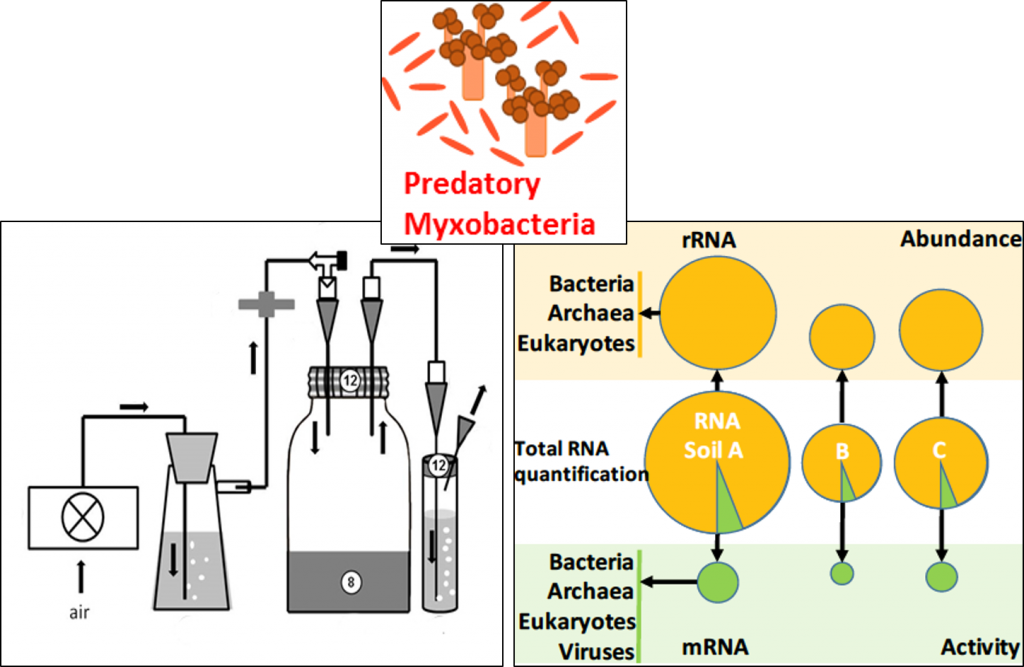Predatory myxobacteria in soil food webs: modulation of microbiome, energy and matter fluxes assessed by quantitative metatranscriptomics and modelling

Soils host the most complex communities on Earth and are vital resources that provide essential ecosystem services and food security to humankind. Due to the complexity of soils, and the immense organismic diversity explicit links between microbiome composition (both taxonomical and functional), microbial physiology and energy fluxes has not been achieved for any soil to date. In fact, there was no single method to assess soil microbiota and soil fauna diversity, abundance and community composition at high taxonomic resolution. Double-RNA metatranscriptomics now enables such holistic census studies across phylogenetic domains and trophic levels based on rRNA and mRNA. This has the potential to establish mechanistic links between trophic interactions in the microbiome and energy and carbon fluxes along the bacterial and fungal energy channels. MYXED-UP proposes the investigation of a neglected group of microorganisms in the soil food web: the predatory bacteria. We want to explicitly identify the role of predatory Myxobacteria in soil food web and their capacity to modulate the microbiome, as well as energy and matter fluxes. For this purpose we have teamed up with an interdisciplinary consortium of six researchers from soil biology, biogeochemistry, microbiology, meta-omics and modelling which will face the challenge by a unique combination of expertise along central laboratory experiments. We will assess the impact of Nematode and Myxobacteria onto microbiome structure and energy and matter fluxes in two experiments with natural and synthetic microbial consortia. The highly integrated experiments will provide rich and heterogenous datasets that will ultimately fuel into modelling of microbial growth and turnover of specific functional guilds in the microcosms. In the framework of the joint research, MYXED-UP will provide broad insight into microbiomes using quantitative metatranscriptomics, that will establish links between microbiome members and thermodynamics. In addition, we aim to develop a broadly applicable and high-resolution modelling approach for estimation of C-and energy flux in microbiomes. Subsequently, we will apply the approach to estimate the contribution of predatory Myxobacteria to C-and energy flux in soils.
Link to English scientific abstract
Link to German scientific abstract